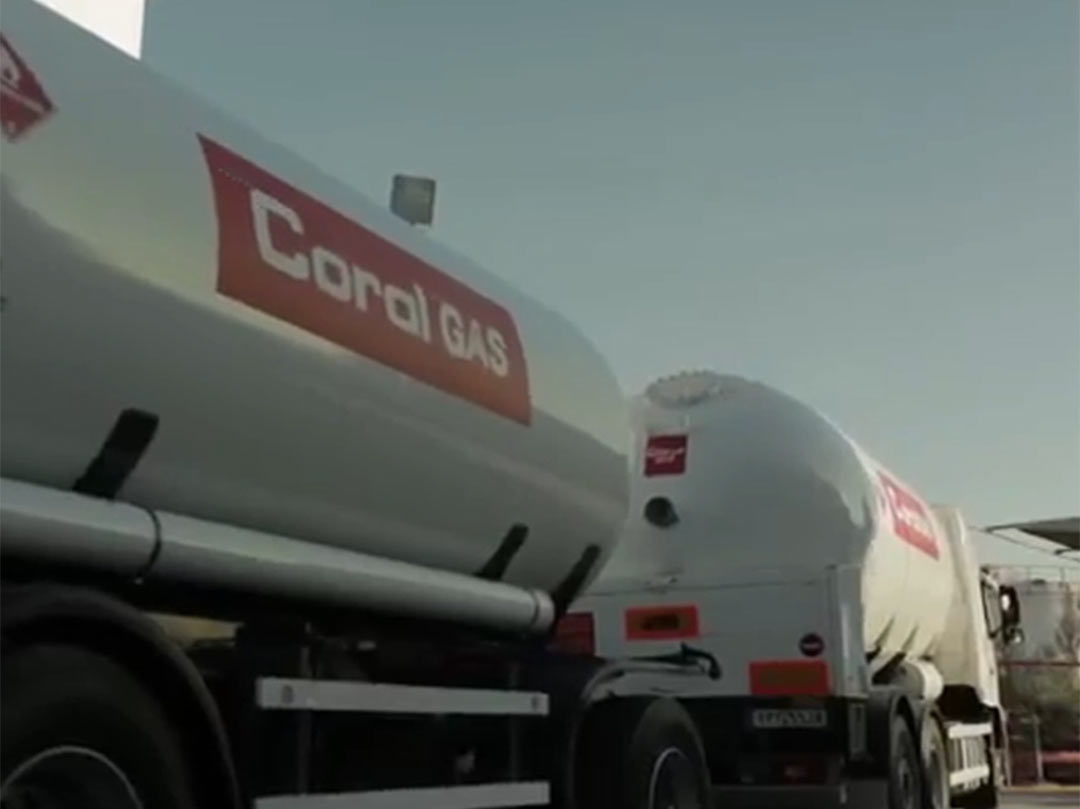Frequently asked questions about liquefied petroleum gas in a tank
- 1. What is liquefied petroleum gas (LPG)? Where is it used?
Liquefied petroleum gases are propane and butane hydrocarbons and their mixtures either extracted as components of natural gas reserves or, as is the case in Greece, obtained by refining crude oil. LPG is suitable for any type of energy requirement and is a reliable, economical and environmentally friendly fuel.
LPG uses:
Manufacturing
In manufacturing of textiles, paper, construction materials, foods, etc.
Small industries and independent professionals
At hotels, restaurants, patisseries, bakeries, laundries, processing companies, etc.
Agriculture
At dairies, cotton ginning mills, tobacco-corn dryers, greenhouses, poultry farms, etc.
Auto Gas
In various types of vehicles
Home use
For central heating, hot water, cooking, energy-efficient fireplaces, heated pools and air conditioning. - 2. What are the requirements for installing an LPG tank?
To have an LPG tank installed, you need:
- A site with a minimum separation distance of 3 metres around the tank (in a total area of about 8 metres by 7 metres), far from ignition sources and in a well-ventilated space.
- There should be safe access and parking available for a tanker truck no more than 25 metres from the tank siting.
Coral Gas offers a range of above-ground tanks with varying capacities. Above-ground tanks are easy to install and are the most affordable way to benefit from the advantages of bulk LPG use. When the tank site is determined, Coral Gas will assess the following factors:
- Preparation of a flat, hard base
- Safe separation distance around the tank
- Access by the fuel delivery tanker
- Protection against accidental damage
- Water supply for cooling the tank
The following table presents the dimensions for the most common above-ground LPG tanks.
SIZE AND TYPE OF LPG TANK TANK PROPANE CAPACITY WT OF EMPTY TANK TANK DIAMETER TANK LENGTH lt. lt. kg kg m m 1000 CYLINDRICAL HORIZONTAL 800 408 300 0.8 2.2 1750 CYLINDRICAL HORIZONTAL 1400 714 400 1.0 2.4 2500 CYLINDRICAL HORIZONTAL 2000 1020 600 1.2 2.5 3000 CYLINDRICAL HORIZONTAL 2400 1224 700 1.2 3.0 5000 CYLINDRICAL HORIZONTAL 4000 3240 1000 1.2 4.7 Underground tanks
If you would prefer to maintain the aesthetics of your garden without sacrificing space, Coral Gas offers you the option of an underground tank. Once an underground tank is installed, you can plant grass or plants on the surface soil so that only the markers and a small cover (covering the tank’s valve assembly) are visible to indicate its location.
A cathodic protection system protects the tank from corrosion. Additionally, the effectiveness of this protection can be checked with a minimum effort, without requiring any intervention to the tank or causing damage to the garden.
The following table presents the dimensions for the most common underground LPG tanks
SIZE AND TYPE
OF LPG TANKTANK PROPANE
CAPACITYWT OF
EMPTY TANKTANK
DIAMETERTANK
LENGTHlt
lt
kg
kg
m
m
1000
CYLINDRICAL VERTICAL
800
408
500
1.0
1.3
1650
CYLINDRICAL VERTICAL
1320
673
500
1.0
1.5
1750
CYLINDRICAL HORIZONTAL
1400
714
640 + concrete
1.0
2.3
2750
CYLINDRICAL HORIZONTAL
2200
1120
850
1.2
2.5
5000
CYLINDRICAL HORIZONTAL
4000
2040
1040 + concrete
1.2
4.5
- What do I need to do to use LPG in my home?
To have liquefied petroleum gas installed in your home, you will need the special LPG devices (boiler/burner), as well as an LPG pipe network (exterior and/or interior) and a special tank (underground or above-ground).
With the help of our experienced and specially trained technical associates, you can select the type of tank, the capacity and location depending on the space and your needs so that the installation can take place easily and quickly. Phone 210-9491000 today so we can help you.Once the installation is complete, Coral Gas will undertake to supply you with LPG, allowing you to enjoy the benefits of its use.
- Is LPG an economical fuel?
Fuel prices change daily and in a different way for each type of fuel. In general, LPG is a cheaper fuel and offers cost-savings in comparison with heating oil. Its high energy output, higher calorific capacity, high degree of combustion efficiency and the lower cost of maintenance translate into a significant savings in operating costs for any household. - Why Coral Gas LPG?
With the support of the Motor Oil Group, which operates one of the most state-of-the-art and flexible refineries in Europe, the uninterrupted supply of liquefied petroleum gas is assured. LPG for home use is delivered directly from our facilities with our fleet of tanker trucks, ensuring the required quality and accurate quantity at each delivery.
Our expertise springs from our extensive experience with LPG and our deep knowledge of the regulations and practices followed worldwide. Our experienced network of partners, under the control and guidance of our Technical Division, guarantees safety and reliability.

